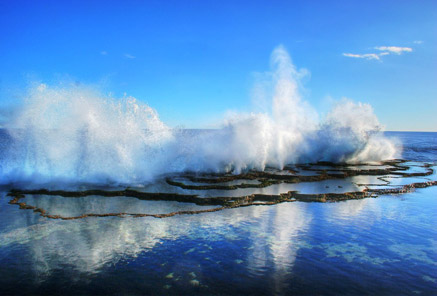Tonga
Geography
Land Use
People
Economy
Water Statistics
|

Status of Water Resources
The source of freshwater for Tonga is either through rainwater harvesting, or extracted from a thin freshwater lens within the highly porous limestone substrate. The water resources of Tonga are primarily in the form of groundwater. Surface water resources are not present on most islands; exceptions are 'Eua where supply originates from springs in caves high above sea level, and on a number of the volcanic islands including Niuafo'oua and Niuatoputapu and Tofua, where there are several salty lakes.
Surface water: Eua, Niuafo'oua and Niuatoputapu and Tofua.
Groundwater: Urban centres.
Problems with Water Resources and Associated Environment Issues
- Exploitation and consumption
The greatest demand for water is on Tongatapu. According to the 1996 census, Tonga’s total population was 97,784. Tongatapu has the highest population density and totalled 66,979 which accounted for 69% of the total population. Vava’u recorded 15715 (16%), Ha’apai recorded 8138 (8%), ‘Eua recorded 4934 (5%), and the Niuas recorded 2018 (2%). As it is estimated that the population has grown by 46,000 people in the last decade it is possible that the population of Tongatapu has grown by up to 30,000 people. These figures can all be updated and verified when the 2006 census figures are released. Water consumption per household per month, in the Nuku’alofa area was estimated at 0.03 ML in 1998.
- Wastewater management and pollution control
There is no centralised reticulated sewerage system in Tonga. All wastewater is managed by on-site systems, with supervision by the Ministry of Health (MOH) when resources permit. In this respect wastewater management is in the hands of the community.
- Information exchanges on water resources
According to personnel involved in water management, there is no functioning information or data exchange systems on water resources. Data and information are exchanged to fulfil requirements for externally funded projects such as the current development of the Water Safety Plans. However on a daily basis this does not necessarily occur.
Diagnostic Report
Demonstration Proposal
Hot Spot Analysis
Information on this page obtained from Integrated Water Resources Management programme's Diagnostic Reports (SOPAC 2007)
© 2024 SPC Water, Sanitation and Hygiene. All rights reserved.